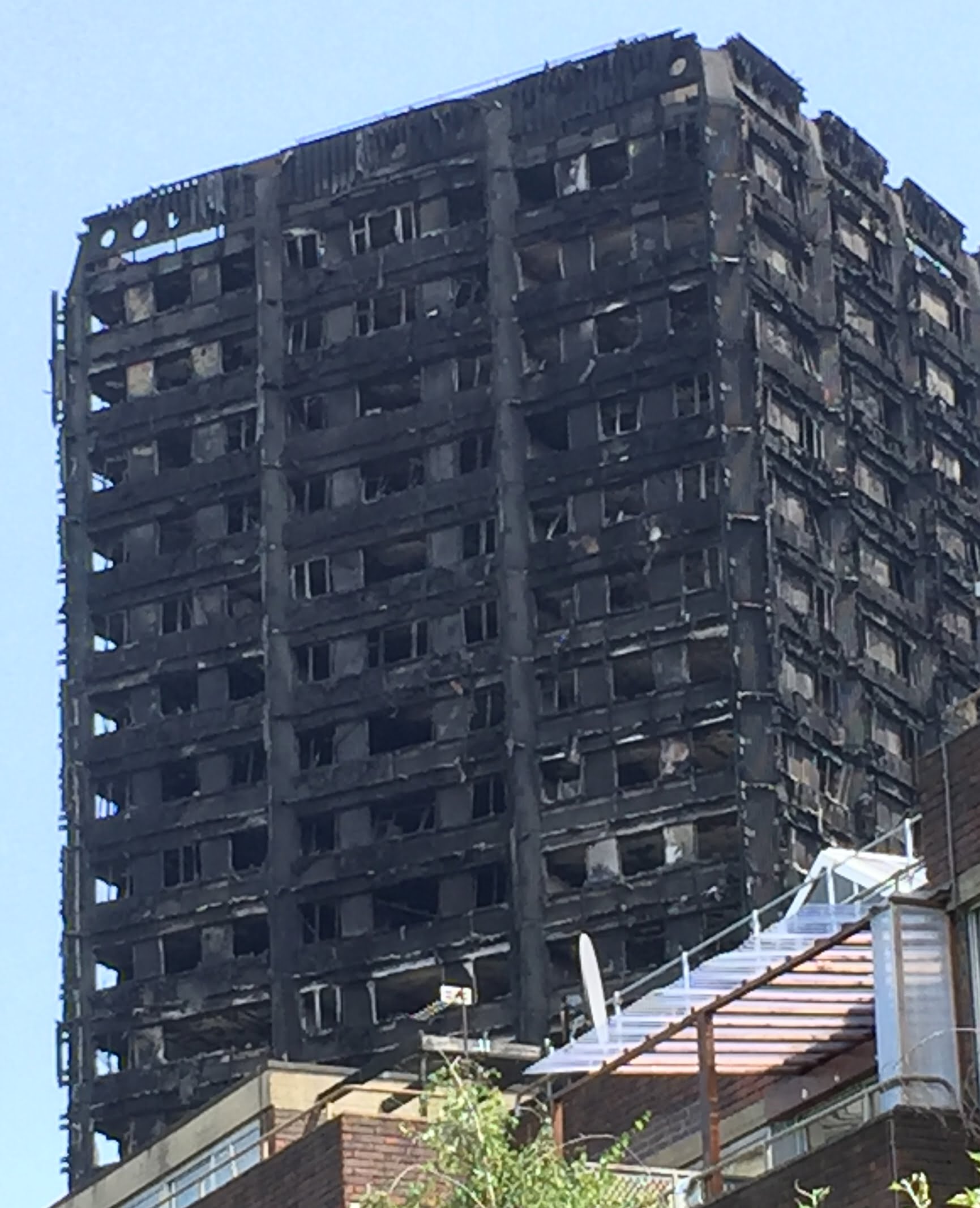
The rapid spread of the tragic fire from its start in a fridge-freezer was allowed by windows, and by cladding which was not con-form to fire safety regulations. The public inquiry into the Grenfell Tower fire, London, 2017, in which 72 people were killed, has pub-lished the report on its first phase (860 pages), investigating the course of events during the fire. This concludes that the fire spread because hot smoke or flames from the initial fire, which started in a Whirlpool Hotpoint fridge-freezer, caused a uPVC window to deform so enabling fire to reach the external cladding ”the principal reason why the flames spread so rapidly up, down and around the building was the presence of the aluminium composite material (ACM) rain-screen panels with polyethylene cores” and burning drips from these “the presence of polyisocyanurate (PIR) and phenolic foam insulation boards behind the ACM panels, and perhaps components of the window surrounds, contributed to the rate and extent of vertical flame spread”. It is indicated that there is compelling evidence that the cladding panels, installed in a 2015-2016 refurbishment, did not comply with the fire safety requirements of the UK Building Regula-tions. Phase 2 of the inquiry will try to establish responsibility for this decision between the architects Studio E, the fire consultants Exova who were supposed to verify conformity, the cladding manufacturer Celotex, and the UK Building Regulations.
Grenfell Tower Inquiry, Phase 1 Report https://www.grenfelltowerinquiry.org.uk/phase-1-report
“Grenfell Inquiry: Aesthetics v safety v money”, BBC Exova March 2020 https://www.bbc.com/news/uk-51859272